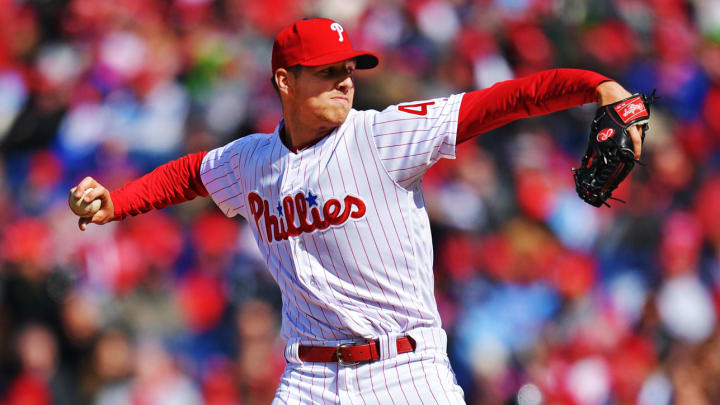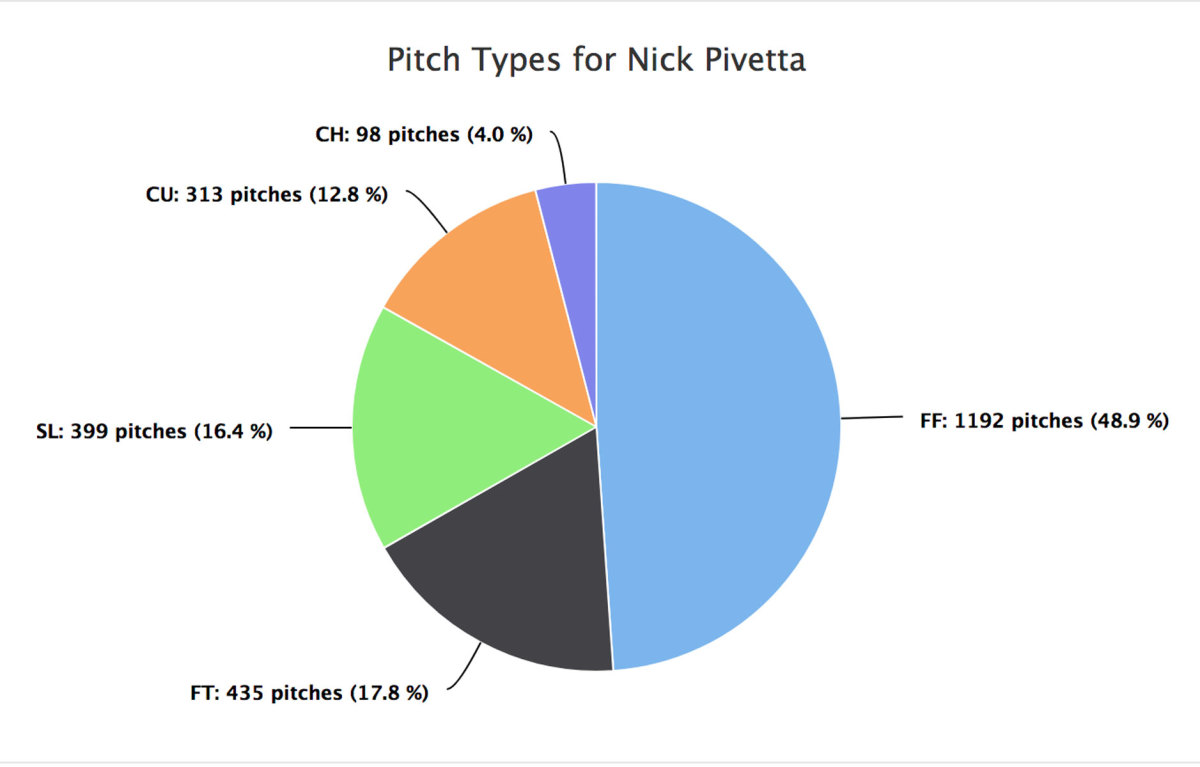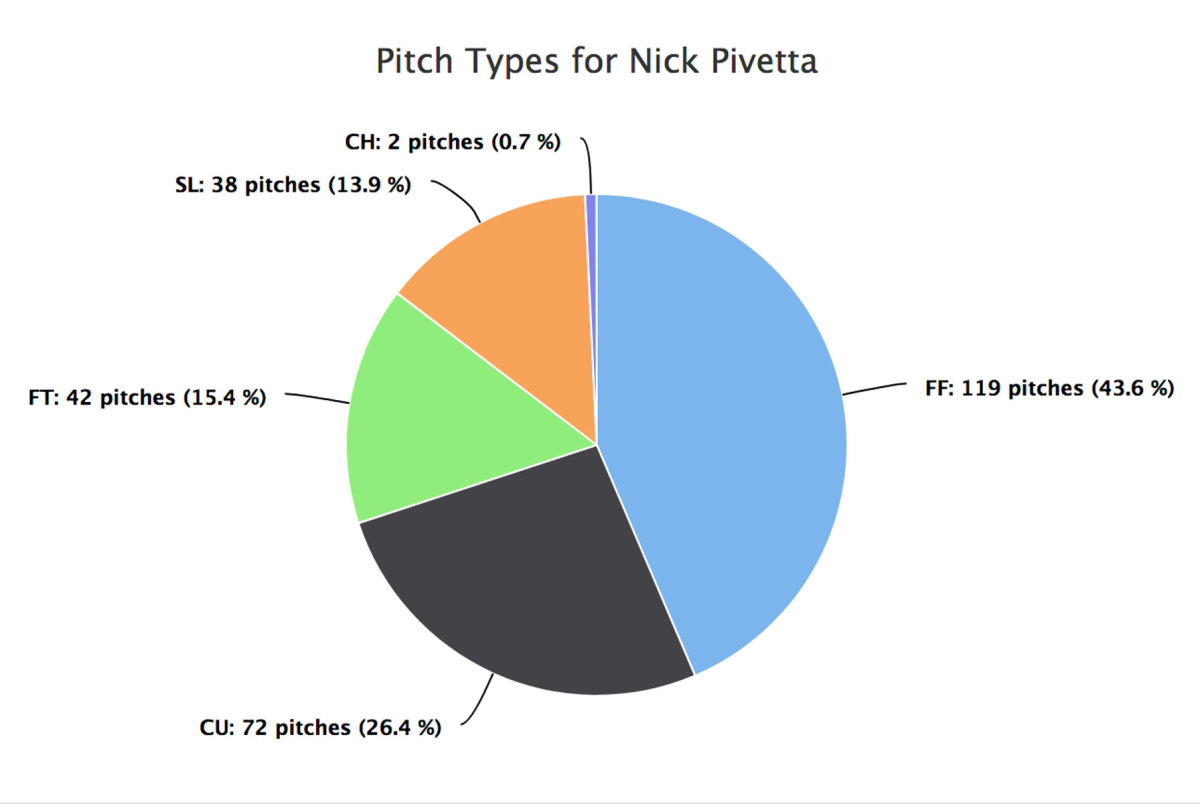Phillies Starter Nick Pivetta Looks Improved, But Is It Simply an Illusion?

It’s still early in the baseball season. At some point of the year, we all just get to indulge our inner Potter Stewart. We know the transition from early to not early when we see it. And we haven’t seen it yet.
We have, however, reached one nebulous milestone on the baseball calendar. It may still be early, but we’re nearing three weeks worth of games. Most starting pitchers have taken the ball three times, while everyday players have racked up anywhere between 60 and 80 plate appearances, depending on how many games their teams have played. It’s still early, but we can look at some performances around the league and ask ourselves the following question.
Is this real? Let’s take a look at Phillies starter Nick Pivetta, who has stormed out of the gates by posting a 2.70 ERA, 2.35 xFIP, 0.96 WHIP and 29.2% strikeout rate in his first three starts.
Healthy skepticism is the right approach here. Pivetta had a 6.02 ERA, and while his FIP and xFIP were both about a run and a half lower, no one is writing home about a 4.50 mark in either of those metrics. He racked up a 9.8% walk rate and 1.51 WHIP, and surrendered 25 homers in 133 innings, giving him the fifth-highest HR/9 in the majors. It was an ugly rookie year that folded quite seamlessly into a 96-loss season for the Phillies.
There was a silver lining, though. Pivetta struck out 140 batters in those 133 innings, ending the year with a 24% strikeout rate and 9.47 K/9. Any pitcher who strikes out more than a batter per inning over that many frames has potential, even in this strikeout-happy era, and that goes double for a pitcher entering his age-25 season. Pivetta may have had a bad 2017 campaign, but he clearly wasn’t hopeless.
Pivetta’s first start of the year wasn’t special, four innings of 3-run, 5-hit ball against the Braves. The next two were beauties. Pivetta tossed 5 2/3 shutout innings against the Marlins, striking out nine while allowing just four hits. All those strikeouts helped run his pitch total up to 97 by time Gabe Kapler turned to the bullpen. He backed that up earlier this week with seven strong innings against the Reds, allowing two runs on five hits with seven strikeouts and, for the second straight start, zero walks.
When trying to answer the is-this-real question, the first order of business is to compare the current year to previous performance looking for substantive change. It’s easier in the case of a second-year player, like Pivetta, because we have to check what he’s doing this season against just one other season. Pivetta’s repertoire hasn’t changed. He’s still throwing a four-seamer, two-seamer, curveball and slider, and dabbling with a changeup. What has changed is the pitch mix.
The following pie charts are from Statcast, and detail Pivetta’s pitch usage since entering the majors. The first one is from last year, and the second one is his usage for his first three starts of this season.


One obvious difference should jump out at you. After throwing his curveball 12.8% of the time last year, Pivetta is spinning it up there 26.4% of the time this season. All told, Pivetta has thrown 72 curveballs this year, and the results have been excellent. He has gotten 11 whiffs (15.3%), 17 called strikes and 13 foul balls. Hitters are 2-for-9 when putting it in play, and both hits were singles. Judging by the numbers alone, the curve has been one of Pivetta’s best pitches, and it figures to remain a key offering in his repertoire.
Earlier this week, we looked at Gerrit Cole’s increased curveball usage in the early going this season. In Cole’s instance, the curve as always great but, for reasons unknown, stifled during his time in Pittsburgh. The Astros have likely encouraged him to use it more often, and the results speak for themselves. Such is not the case with Pivetta. Part of the reason he threw the curve just 12.8% of the time in his rookie year was because it wasn’t a very good pitch.
First and foremost, Pivetta didn’t generate enough whiffs with the curve last year. The pitch had a swinging-strike rate of 11.8%, well below average for a put-away breaking ball. Moreover, when hitters made contact with it, they made Pivetta pay, going 20-for-56 with two homers and two doubles. The stark contrast in results suggest that the pitch is markedly different this year.
Let’s take a look at Pivetta’s curve from last year to this year. In an effort to keep everything as even as possible, I pulled clips of Pivetta succeeding with the pitch last season. The first GIF below is from 2017, and the second one is from this year.
The evident difference has little to do with the pitch and more to do with the pitcher. Last year, Pivetta came set and delivered from the belt. This year, he’s coming set at the chest. This is a common move for a young pitcher to make. The foundation of success on the mound comes from having a repeatable delivery. That leads to improved mechanics, without which no pitcher can succeed on a consistent basis. Plenty of successful pitches come set at the belt, but that sort of delivery necessarily has more moving parts. If you set at the belt, your hands must come up before they break and start to deliver the pitch. A pitcher who comes set at the chest eliminates the need to raise his hands before breaking them, thus removing one step from the process. In general, the fewer steps there are, the easier a delivery is to repeat exactly.
Indeed, when we compare 2017 Pivetta against the 2018 version for the other pitches in his arsenal, we find the same difference.
2017 four-seam fastball
2018 four-seam fastball
2017 two-seam fastball
2018 two-seam fastball
2017 slider
2018 slider
Is this about the curveball being improved, or is it about Pivetta’s tweaked delivery allowing him to better repeat his mechanics, and thus get more out of the curveball than was possible last year? My bet would be on the latter, but we can’t prove that on three starts alone. But, remember, that’s not the question we sought to answer at the start of this column. After all, we’re in the heart of is-this-real season. So, is this real? With a change this substantive and demonstrable, I am comfortable saying, yes, this is real. Pivetta bears watching in the short term, but the Phillies just may have another top-40 starter on their hands.
